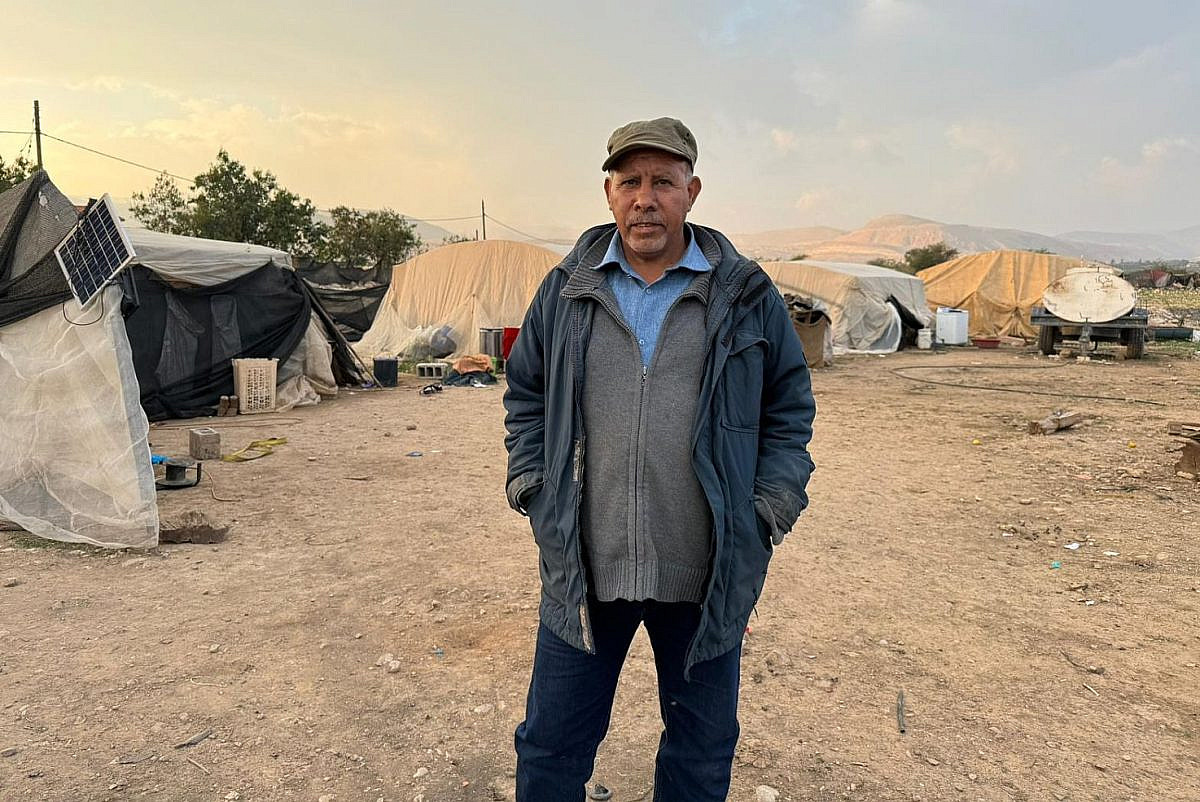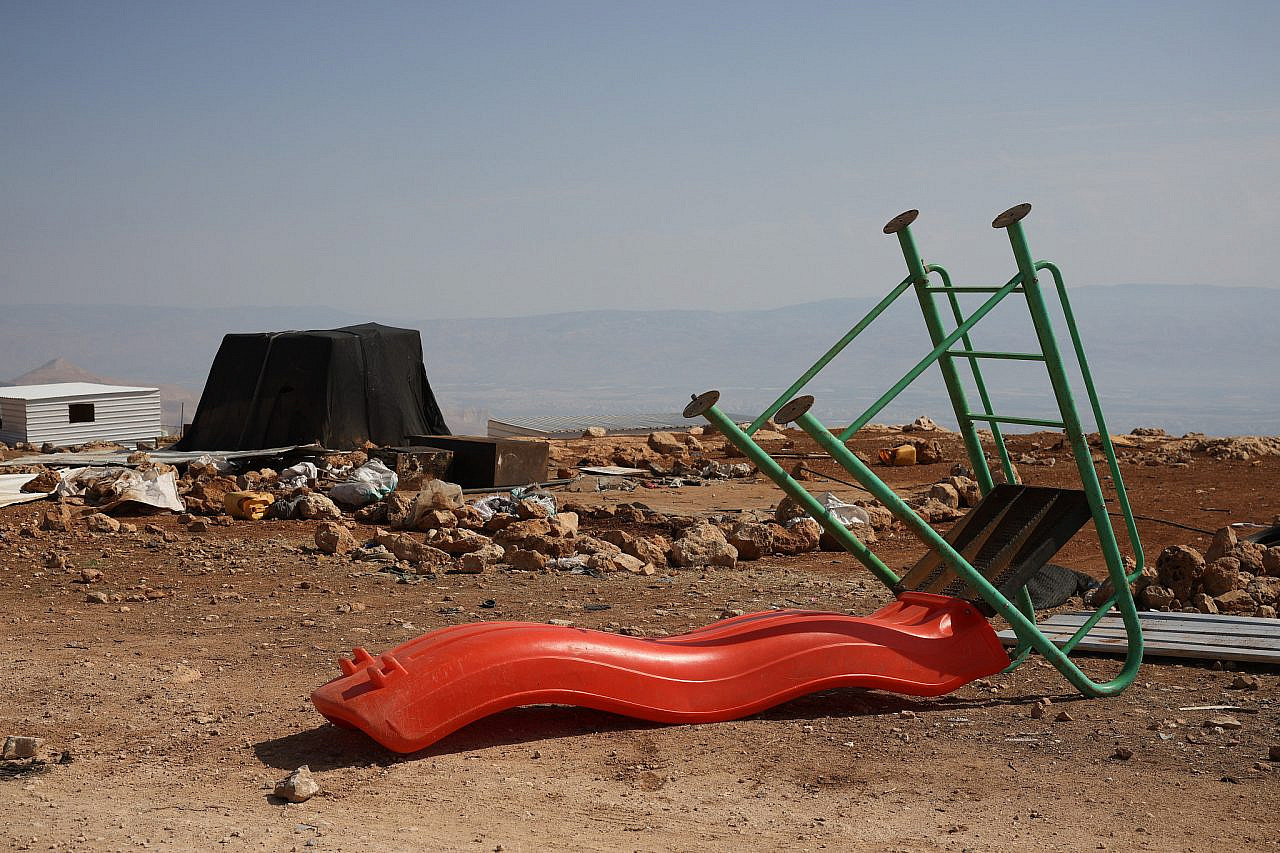Naama Abiyat’s children are all she has left. I meet the 29-year-old mother of five inside a thinly-walled tent where she is living in the southern occupied West Bank; the tent is nearly empty, save for a blanket she received from passers-by and a few wooden logs. Her children interrupt our conversation from time to time, demanding her attention and letting her know that they are cold.
Until two months ago, Abiyat had her own room, a house, a garden, and an olive grove in Al-Qanoub — a small, family-oriented village with 40 residents, located north of Hebron. Between Oct. 11 and Nov. 1, however, the entire community fled after a series of pogroms by Israeli settlers who descended from the nearby settlement of Asfar and the adjacent outpost of Pnei Kedem. The settlers burned houses, set their dogs on the farm animals, and, at gunpoint, ordered the residents to leave or else they would be killed.
Since then, Abiyat and her children have been wandering, without land and without a home. Along with four other families who were displaced from Al-Qanoub, they set up temporary tents on the outskirts of the town of Shuyukh, closer to Hebron.
On the day of the expulsion, the settlers refused to allow them to take anything from the burning village: her husband’s ID card, vehicles, mattresses, cell phones, bags of olives, keys — “and my clothes,” one of her sons adds. Everything was left behind, and much of it stolen. Abiyat’s eldest son, who is 11 years old, can no longer go to his school near the village, as there is nobody who can drive him there.
In the days leading up to her family’s decision to flee the village, Abiyat would sleep outside with her children, fearing that settlers would set their house on fire while they slept, as had happened to one of her neighbors. “At night, we’d lock the house, turn off the lights, and then go down to the olive trees to sleep under the sky,” she says.
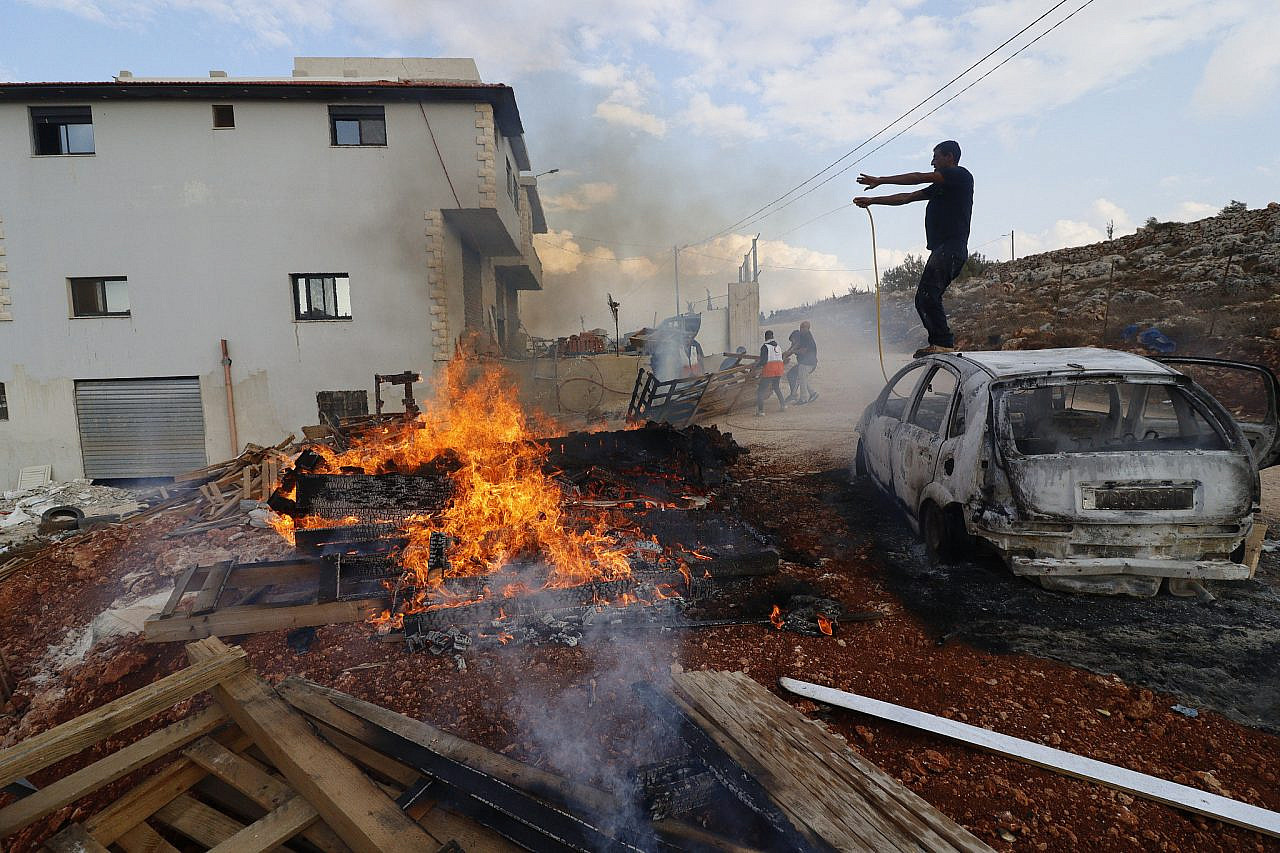
Now, Abiyat is busy figuring out how to get enough money to buy firewood for the winter. “I’m talking to you, and my whole body is exploding,” she says. “Everything here is scorpions and snakes. The children are in a difficult mental state. Nothing excites them in life anymore.”
Under the cover of war, a total of 16 Palestinian villages in the West Bank — collectively home to over 1,000 people — have been entirely depopulated as a result of a surge in settler violence and pogroms against Palestinian herding communities. Separated from their communities and forced to live in tents on land belonging to other Palestinians, the displaced families are all demanding the same thing: to be able to return home.
‘They told us we had an hour to leave’
Before the war began, the village of Southern a-Nassariyah in the Jordan Valley was home to five families, numbering 25 people in total. On Oct. 13, all of them fled their homes under the threat of violence by Israeli settlers. They are currently living in tents near the village of Fasayil, on land owned by a local resident who allowed them to stay on the condition that they leave by April. The displaced families do not know where they will go next.
“They turned us into laborers. By God, they turned us into laborers,” says Musa Mleihat, placing a cup of tea on a stool outside the tent that has become his home. On the day of his expulsion, he lost his land, which meant losing his livelihood: no longer able to graze his flock, he was forced to sell most of his family’s sheep and goats.
Some of the other villagers have begun working as agricultural laborers in nearby settlements. The settlement of Tomer, for example, is known for its dates and pineapples, and hires Palestinian workers while illegally paying them under minimum wage. Many of the displaced villagers say becoming a laborer is part of the cost of being forced off their land.
Southeast of Ramallah, the 180 residents of the village of Wadi al-Siq were also forcibly displaced as a result of a settler pogrom. On Oct. 12, settlers and soldiers raided the village, shot at and drove out the women and children, before kidnapping three men, handcuffing them, stripping them naked, urinating on them, beating them until they bled, and sexually abusing them.
“After they blindfolded people, they told us we had an hour to leave the village, and after that anyone who stayed would be killed,” Abd el-Rahman Kaabna, the head of the village, recounts. Three months after the expulsion, he is still struggling to cope with the experience, which deeply affected his children — they’ve been wetting the bed ever since.
Kaabna explains that his whole life has changed as a result of the expulsion. The community of Wadi al-Siq was completely broken up: most of the villagers, including Kaabna, are scattered in tents east and south of the town of Ramun, while others are near the town of Taybeh, close to Ramallah. All of them are living on other people’s land.
“We feel like strangers here,” he says. “We don’t have the homes we used to live in, with open fields and pastures. Today I live in an olive grove, and the landowner keeps asking me how long we’ll stay.”
Kaabna’s sons, aged 6 and 8, have not been attending school since the expulsion. In Wadi al-Siq, there was one school for students through 8th grade, but after the residents left, “settlers stole everything inside, including the children’s books. A month ago, they brought a tractor and demolished all of our houses.”
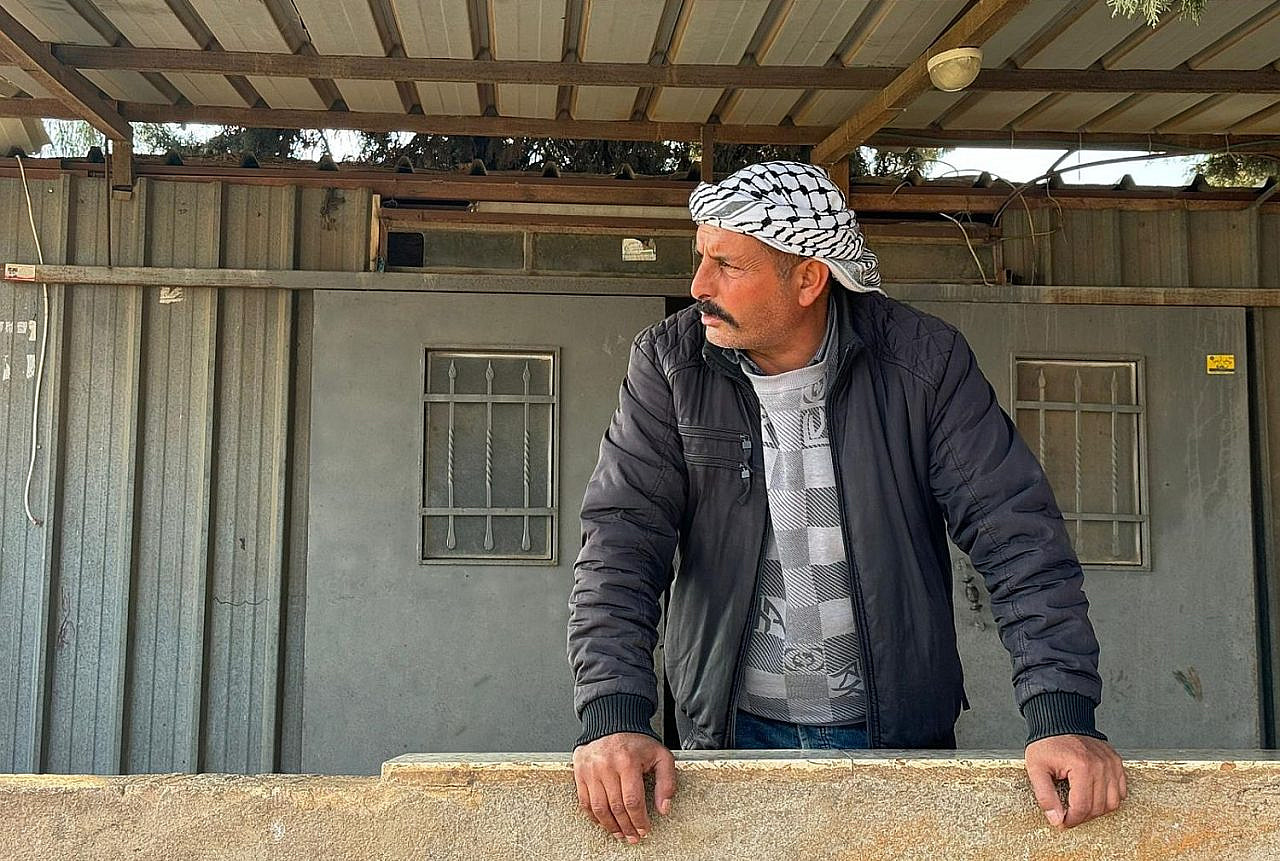
‘The village was filled with memories’
Settlers have destroyed or burned homes in several of the villages that Palestinians were forced to abandon in recent months, making it impossible for their former residents to return. In this way, settlers are finishing the job of Israeli government policy that for years has sought to force Palestinians out of Area C: refusing to recognize their villages, preventing them from accessing water and electricity, and demolishing their homes. According to data provided by the Civil Administration — the bureaucratic arm of the occupation — to the Israeli planning rights NGO Bimkom, between 2016 and 2020, it issued 348 times more building permits to Israeli settlers than it did to Palestinians living in Area C.
The village of Zanuta in the South Hebron Hills, which was home to 250 residents before the war started, is the largest village to have been ethnically cleansed by settlers in recent months. Settlers subsequently destroyed the village school, along with 10 residential buildings. When the residents of Zanuta attempted to return, a Civil Administration inspector told them that if they set up a single tent, the army would consider it to be “new construction” — and demolish it.
After fleeing their homes, Zanuta’s residents have been dispersed to six different locations: some are currently living near the Meitar checkpoint at the southern edge of the West Bank, some near the Tene Omarim settlement, and others have rented land wherever they were able to find it. “We miss each other,” Fayez al-Tal, a former resident of the village, tells me. “From the day we left Zanuta, we haven’t seen each other.”
Not only did the residents lose most of their grazing lands, they were also forced to sell most of their flocks because of the huge fees — NIS 70,000 (around $18,500) per family — required for transporting all of their property from the destroyed village, buying new tents and shacks, and buying food for their remaining sheep and goats which are no longer able to graze.
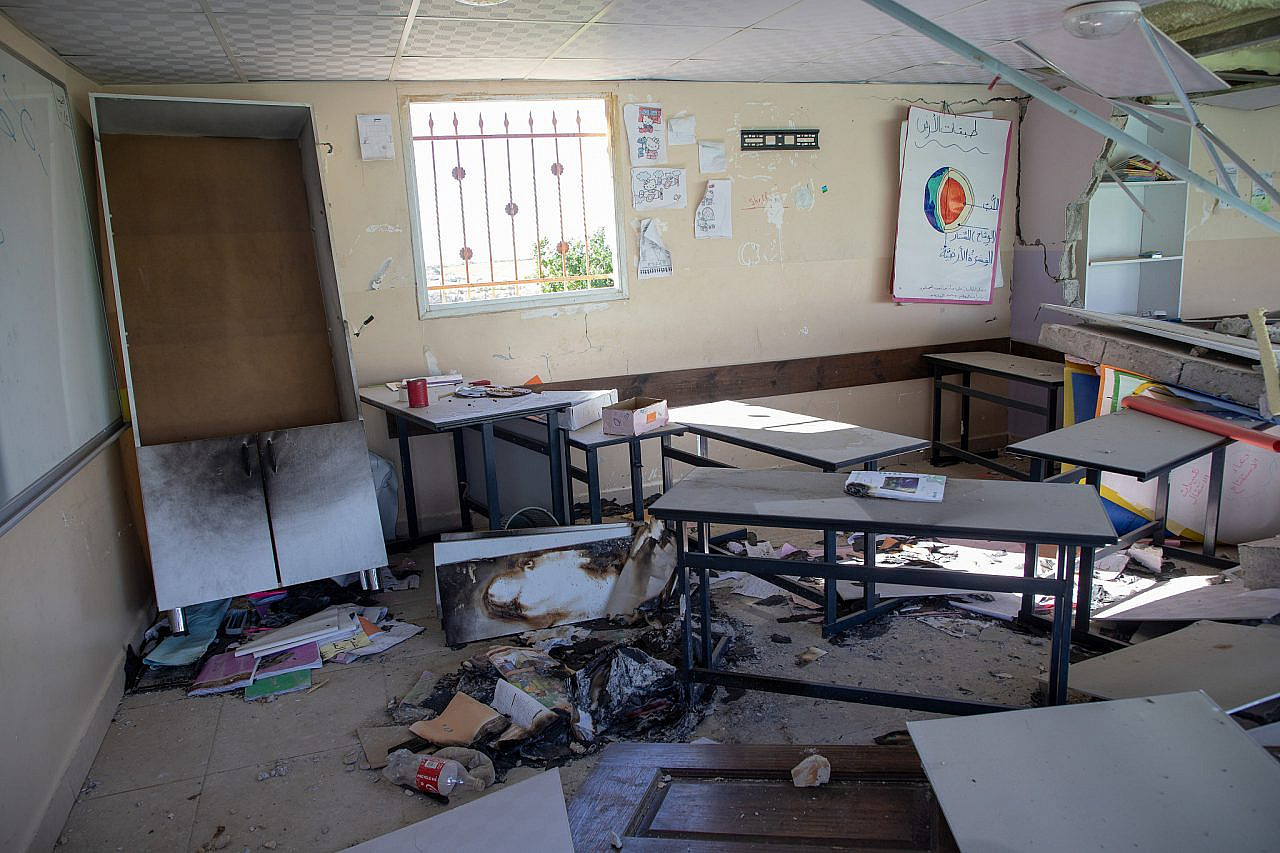
The 85 residents of Ein al-Rashash, a herding village near Ramallah, packed their belongings and fled in the first days of the war. “The village was filled with memories from our childhoods,” one of the residents says. Today, the villagers are living in tents and aluminum shacks that they constructed atop rocky soil, next to the town of Duma. They do not know what they will do next.
“There are no settlers here, but there are other problems: the Civil Administration,” Awdai, who lived in Ein Rashash, explains. After he and others started setting up their tents, a drone from the Civil Administration came and photographed them. A demolition order may soon follow.
‘The government supports the settlers’
In recent years, dozens of herding outposts have been established throughout Area C of the West Bank, and have become a driving force behind the increase in violence against Palestinians. For many former residents of depopulated villages, however, fear of the settler “thugs” is not the sole reason for their displacement, nor what prevents them from returning home. The deeper problem is the backing they receive from the Israeli army and police.
“We know how to protect ourselves,” al-Tal, from Zanuta, says. “But if we do that, soldiers will shoot us, or we will end up in prison. The government supports the settlers.” In the past, he recounts, when soldiers or police arrived in the village during a settler raid, they would arrest Palestinians. Residents of each of the displaced villages say the same: the army protects the attackers and arrests those who are attacked.
On Jan. 3, a hearing was held at the Israeli Supreme Court regarding an appeal filed on behalf of the residents of Zanuta and other villages that were either fully or partially depopulated. The appeal demanded that the state specify how it is working to protect these communities from settlers and requested that the authorities create conditions on the ground that will allow the displaced communities to return to their lands.
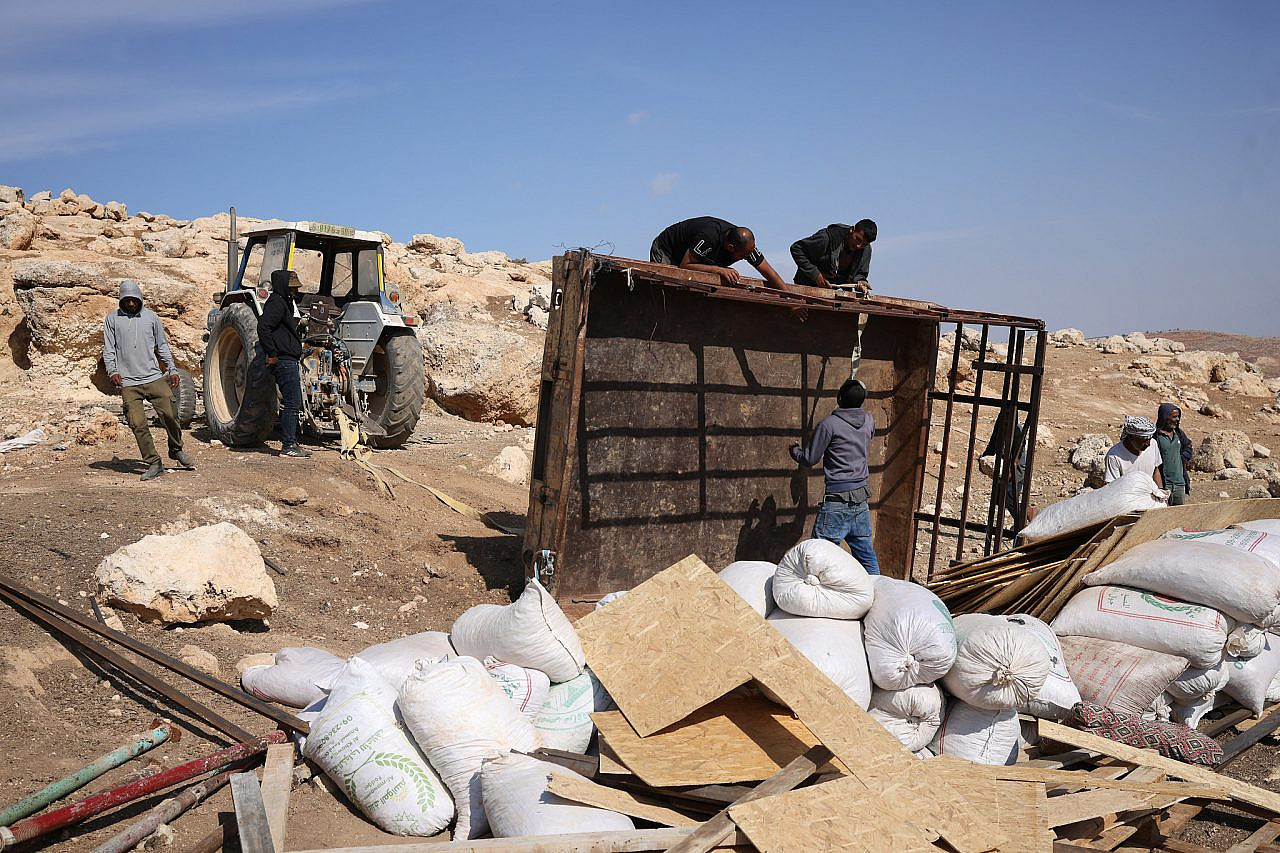
Qamar Mashraki-Assad and Netta Amar-Shiff, who represented the Palestinians, told the judges that police routinely ignore complaints about settler violence and systematically refuse to collect evidence in the field. In addition, the army does not act in accordance with its obligation under international law to protect the occupied population.
In the hearing, Roey Zweig, an officer in the IDF Central Command — which is responsible for army units that operate in the West Bank and for construction in Area C — claimed, absurdly, that settler violence has actually decreased of late due to measures that the army has begun to implement. Throughout his remarks, Zweig — who, in 2022, while serving as the commander of the Samaria Brigade, said that “the settlement [project] and the army are one” — referred to the depopulated villages as “Palestinian outposts,” repackaging the term for Israeli hilltop communities in the West Bank that are ostensibly illegal even under Israeli law.
Most read on +972
Residents in each of the depopulated villages know the names of the settlers who terrorized them, and the settlements or outposts from which they descended. For months, if not years, these settlers have worked systematically to expel them, take over their land, and threaten them with violence.
Yet according to a security official who spoke to +972 Magazine and Local Call, dealing with settler violence and the expulsion of Palestinian communities “is not within the mandate” of the Civil Administration. Claims of discrimination in building permits or enforcement, the official said, should be “directed elsewhere” because the Civil Administration is “only an executive body,” not a “political” one.
A version of this article was first published in Hebrew on Local Call. Read it here.


